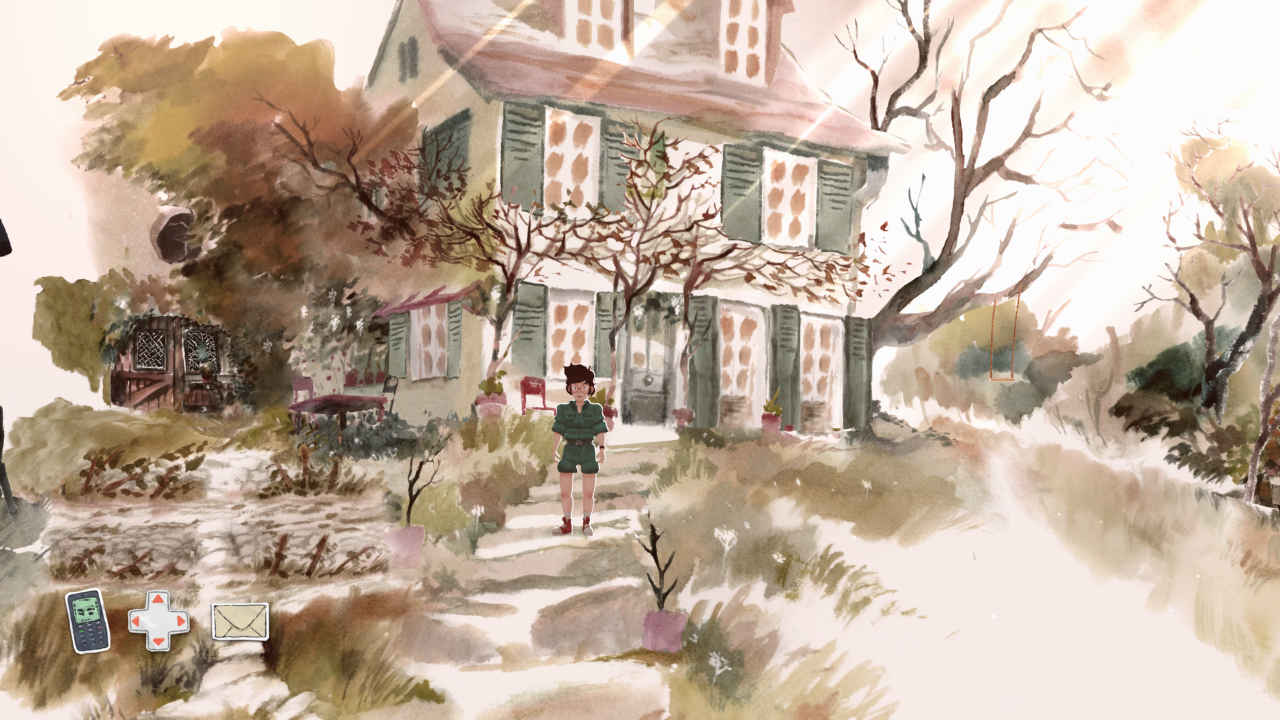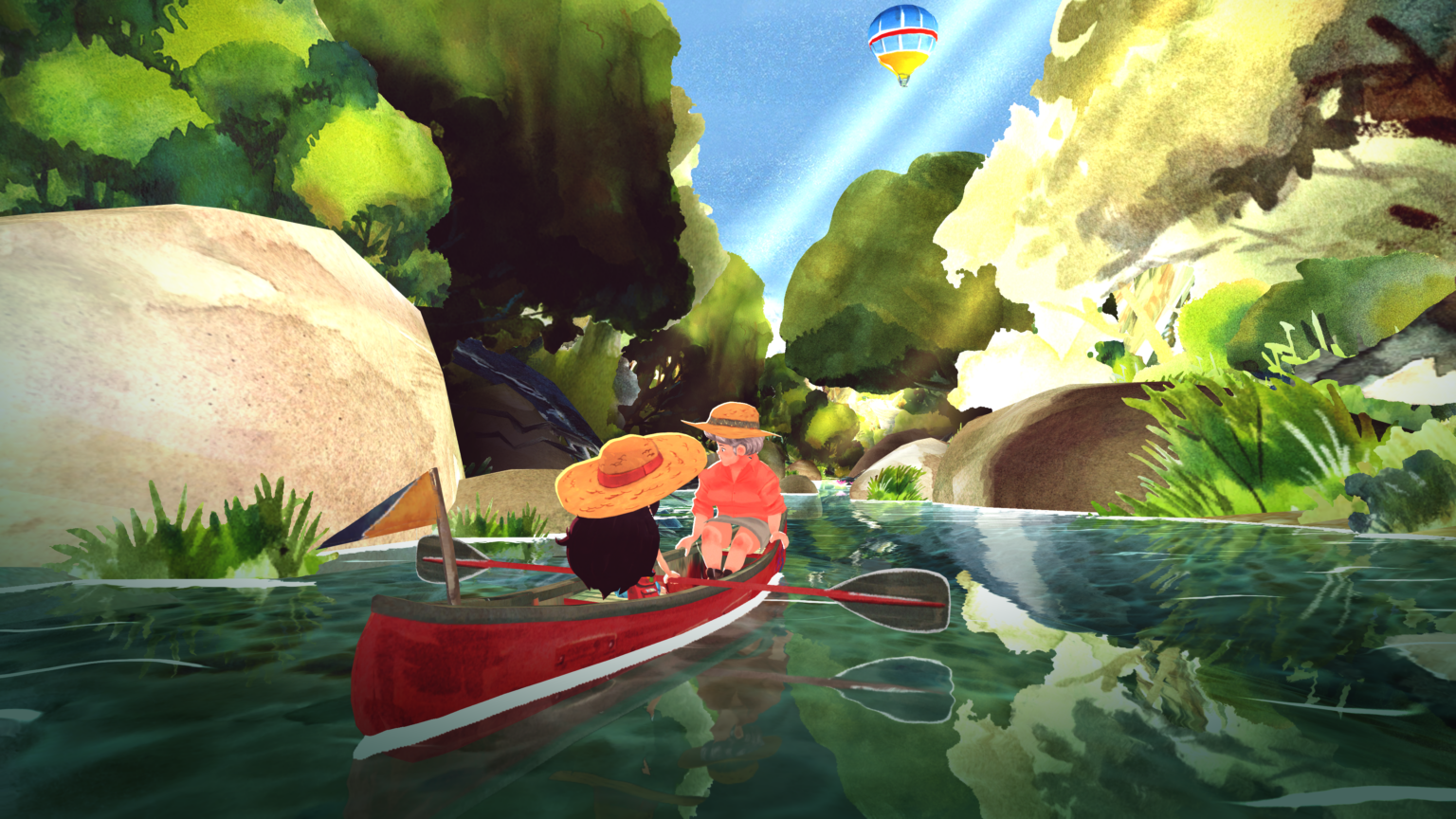Do you remember the struggle of trying to find something to do during the summer holidays? Back in the ‘80s, after watching the extra block of cartoons shown after breakfast TV, it was then often a case of either re-reading comic books, playing outdoors, or trying to beat high scores on a hand-me-down computer or console. These hazy days seemed to last twice as long as any school day.
In 1982, Mimi – the kind and gentle protagonist of this visually striking adventure – spent one hot summer in Southern France with her doting grandmother Nora. They explored the countryside, ate homemade treats, and even sailed up the Dordogne river in a patched-up kayak. Problem is, Mimi – now 32 and living in Paris – doesn’t remember much of this four-week break. As this story pans out over the course of 5-6 hours, you’ll eventually learn why Mini’s memories are so vague.

The story begins with adult Mimi arriving at Nora’s quaint countryside home. Nora has, sadly, recently passed away – and Mimi’s contact has been minimal over the years, at the behest of her dad. A removal company has been hired to dispose of Nora’s belongings, scheduled for the end of the week. Mimi is determined to find items that trigger memories of the holiday spent with Nora before the house is gutted, prompting a race again time.
Finding a memory-unlocking item transports us back to the ‘80s to relive the moment. A handful of eventful days are presented, from morning to night, with each day taking around an hour to play through. Comparisons with a modern point-and-click adventure game can be made. There’s no inventory, however – instead of random/useful items, Mimi collects words, stickers, sounds, and photographs as she explores. These are then used to compile a scrapbook before bedtime. You’re freely able to decorate the pages, and even generate poems with words found. This creative aspect seems skewed toward younger gamers – I can’t imagine adults garnering excitement from placing stickers on a page.


The relationship between Nora and pre-teen Mimi is well-realised. Mimi initially doesn’t want to spend time away from her friends. Seeing her start to enjoy herself after discovering the joys of nature is endearing. Other storyline elements are equally grounded and relatable, including tension in the family which Mimi is shielded from.
Often upon discovering something required to progress or deepen the story, a short interactive sequence will occur. No two are alike. Some are physics based – such as pouring the “right” amount of cereal into a bowl – while others are more methodical, requiring a rotatable item to be interacted with in a certain way. In some Mimi’s hands are controlled independently, lending a mini-game slant.
Puzzles feature too, none of which are taxing, yet are pleasurable to solve all the same. These interactive elements really help draw you into the experience, while also being clearly intended to arouse a sense of nostalgia.

It’s the variety here that pleases the most – each day is different from the last, taking Mimi into the nearby village to complete a shopping errand, and into the woods to explore. It also helps that Dordogne is visually sublime. It uses a watercolour aesthetic that seamlessly combines 3D and 2D assets, and there’s a rare air of consistency – every location has a lot to take in. More rooms in the house slowly become accessible, and you’ll also get to see how the years have taken toil on the houseplants and the rest of the garden. One thing that certainly didn’t change was Nora’s surprising taste in music.
The ‘big event’ here is the kayak. Once repaired, it’s possible to cruise the Dordogne river and stop at key locations. Photography and sound recording also play a part, changing the perspective to first person. To snap and record everything may require a second, or even third, playthrough. It flirts with the idea of platforming too, although in reality, it’s faux platforming – you’re simply pressing ‘A’ when instructed to complete short traversal sequences. Although these sections suffer from stilted animation, it doesn’t impact the sense of whimsy too much.

Like a hot and lazy summer’s day, Dordogne is a very easy-going experience. It’s easy to become drawn into its watercolour world and absorbed in the story. The cycle of exploring the present and returning to the past, in addition to heading home to dinner and bed after a day of exploring, is compelling.
Without question, the developers have successfully managed to create something vivid, imaginative, and memorable here. This is a game that simply wants to invite you into its world, meet its characters, and share its story – all while putting a smile on your face. The only way it could possibly disappoint is if you expected to be challenged in any way.
Developed by UMANIMATION/Un Je Ne Sais Quoi, Dordogne is out now on all formats. Published by Focus.

